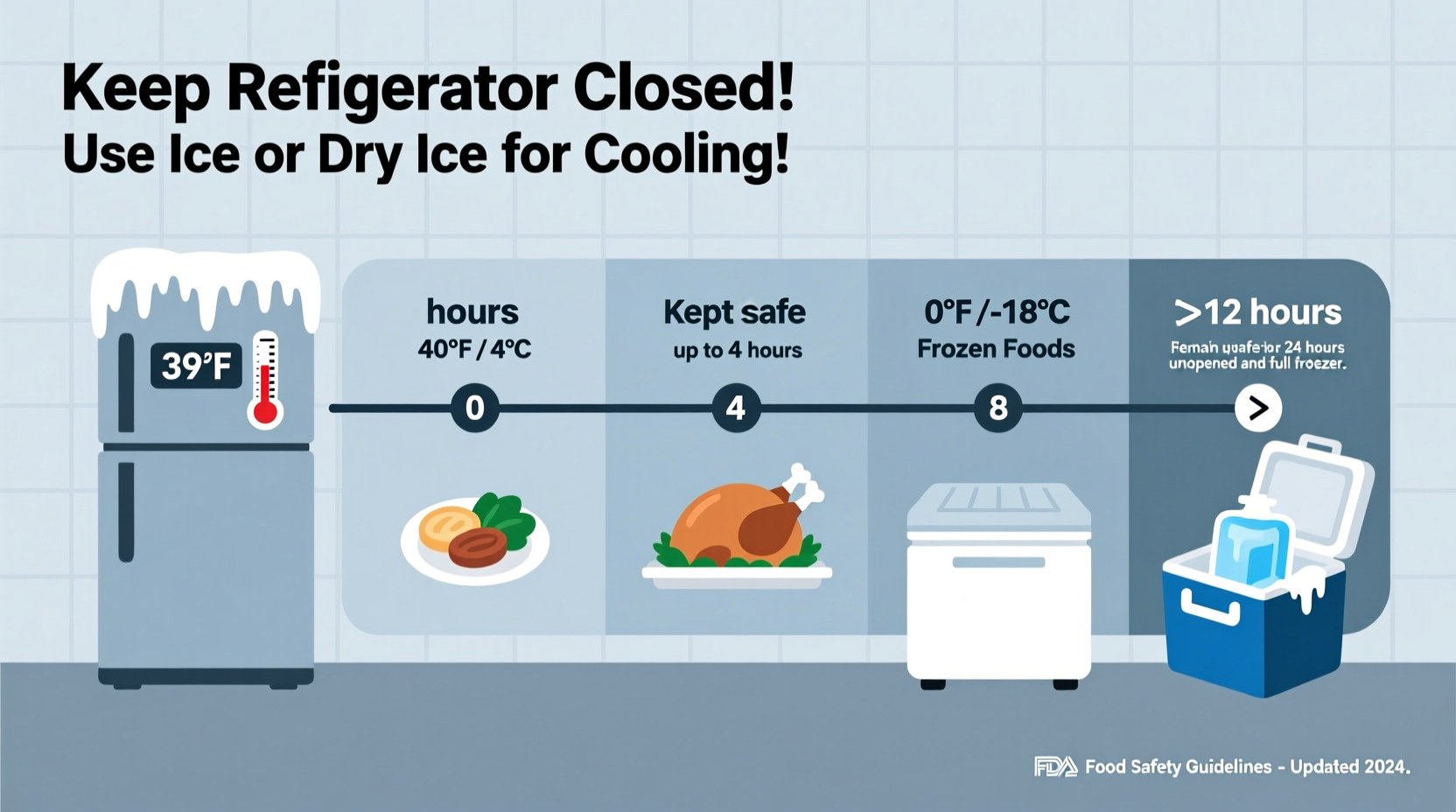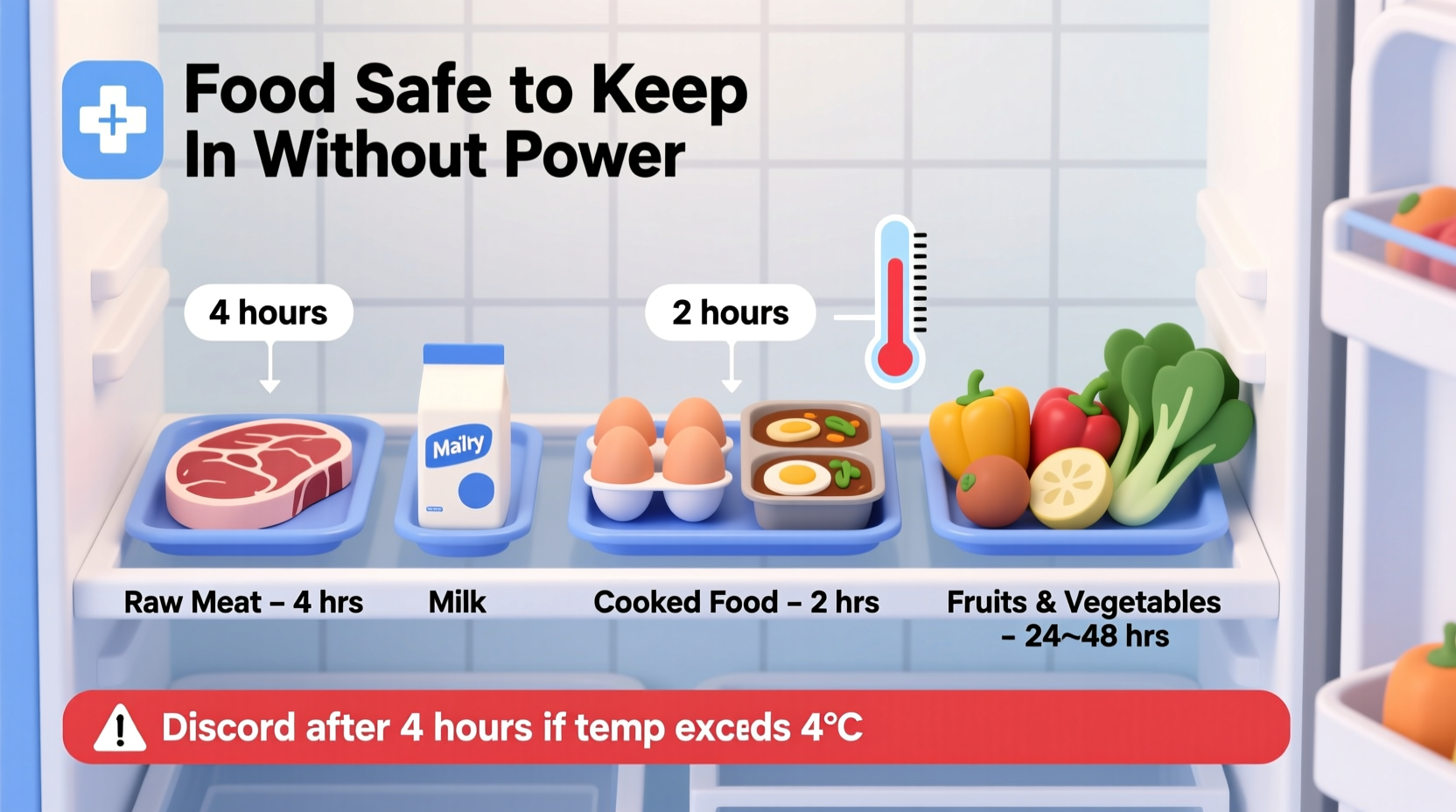When the power goes out unexpectedly, your immediate concern should be food safety. Understanding exactly how long is food good for in fridge without power can prevent foodborne illness while minimizing unnecessary waste. This guide provides science-backed timelines and practical steps to protect your health when the electricity fails.
The Science Behind Food Safety During Power Outages
Refrigerators maintain food safety by keeping temperatures below 40°F (4°C), the threshold where bacteria multiply rapidly. According to the USDA Food Safety and Inspection Service, the "danger zone" for food safety spans from 40°F to 140°F (4°C to 60°C). Within this range, harmful bacteria like Salmonella and E. coli can double in number every 20 minutes.
During a power outage, your refrigerator's insulation provides temporary protection. A fully stocked refrigerator maintains cold temperatures longer than a partially empty one because the mass of cold items helps preserve the overall temperature. The FDA emphasizes that keeping the door closed is critical—each opening allows warm air to enter, accelerating temperature rise.

Food-Specific Safety Timelines After Power Loss
Not all foods degrade at the same rate when refrigeration fails. Understanding these differences helps you make informed decisions about what to keep and what to discard:
| Food Category | Safe Duration (Power Out) | Immediate Discard Signs |
|---|---|---|
| Raw meat & poultry | 2 hours max | Slippery texture, sour smell |
| Seafood | 1 hour max | Ammonia odor, slimy surface |
| Dairy products | 4 hours max | Sour smell, curdling |
| Cut fruits & vegetables | 6 hours max | Mushy texture, mold |
| Opened condiments | 8 hours max | Unusual color, mold |
This how long does food last in fridge without power chart reflects current USDA guidelines updated in 2024 based on extensive food safety research. Remember that these timeframes assume your refrigerator was operating at proper temperature (40°F or below) before the outage and that the door remained closed.
Your Step-by-Step Emergency Action Plan
When the power fails, follow these immediate steps to maximize food safety:
- Check refrigerator temperature with a reliable appliance thermometer—this provides objective data rather than guesswork about food safety
- Keep doors closed—a closed refrigerator maintains safe temperatures for about 4 hours
- Group items together if partially empty to create cold zones that last longer
- Prepare coolers with ice packs for critical items if outage extends beyond 2 hours
- Monitor conditions using a digital thermometer placed in a central location
Many homeowners mistakenly believe that food remains safe longer than it actually does. The CDC reports that foodborne illness cases increase by 23% following major power outages, often because people rely on visual cues rather than temperature monitoring. Remember: "When in doubt, throw it out" remains the gold standard for food safety during power disruptions.
Special Situations: Freezers, Partial Power, and Extended Outages
While refrigerators have the 4-hour safety window, freezers offer more protection. A full freezer keeps food safe for 48 hours (24 hours if half full) with the door closed. For extended outages beyond 4 hours:
- Consider transferring critical refrigerated items to coolers with ice packs
- Use dry ice (5 pounds per day for an 18-cubic-foot freezer) following safety guidelines
- Never use(MigrationBuilder to refreeze thawed food unless it still contains ice crystals
- Be especially cautious with high-risk foods like raw meats and dairy products
During rolling blackouts where power flickers on and off, your refrigerator may cycle through cooling periods. In these cases, track cumulative time without power rather than continuous outage duration. Each cooling cycle resets the clock somewhat, but frequent temperature fluctuations actually accelerate spoilage for some food types.
After Power Returns: The Critical Assessment Phase
When electricity is restored, don't immediately assume all is well. Follow these steps before restocking your refrigerator:
- Check temperatures of all refrigerated items with a food thermometer
- Discard any perishable food that reached above 40°F for more than 2 hours
- Inspect for spoilage signs even if within time limits (some foods spoil faster)
- Clean and sanitize refrigerator surfaces before restocking
- Consider replacing your refrigerator's water filter after extended outages
Many people wonder how long is food good for in fridge after power comes back. The answer depends on how long items were in the danger zone before power restoration. Food that remained below 40°F throughout the outage can be safely returned to refrigeration. Items that exceeded this threshold require careful evaluation based on type and exposure time.
Preventing Future Food Loss: Preparedness Strategies
Smart preparation minimizes waste during unexpected outages:
- Keep appliance thermometers in both refrigerator and freezer
- Consider investing in a backup power solution for critical appliances
- Learn which foods in your regular rotation have longer shelf stability
- Keep a supply of non-perishable foods for emergency situations
- Download the FoodKeeper app from USDA for real-time food storage guidance











 浙公网安备
33010002000092号
浙公网安备
33010002000092号 浙B2-20120091-4
浙B2-20120091-4